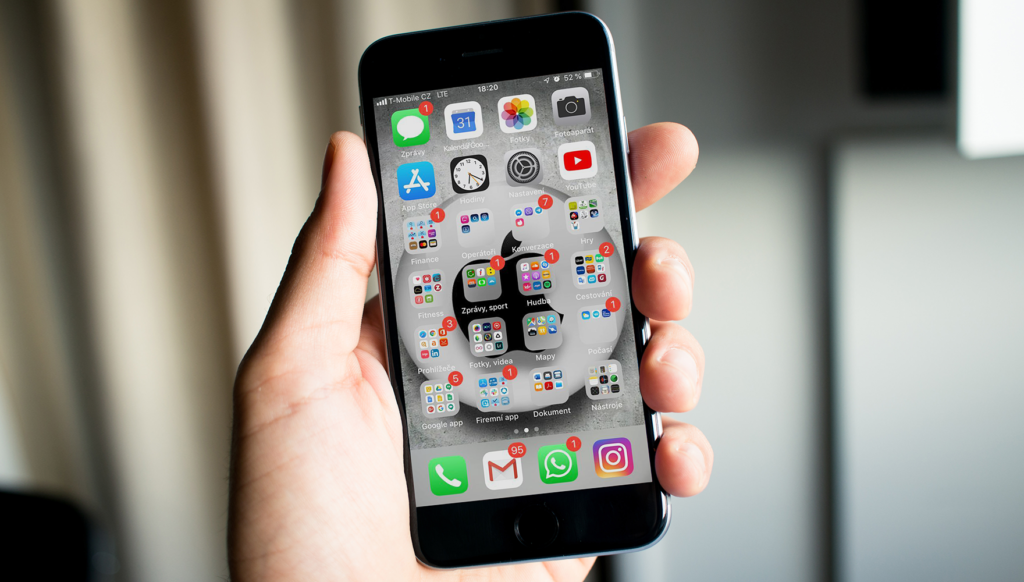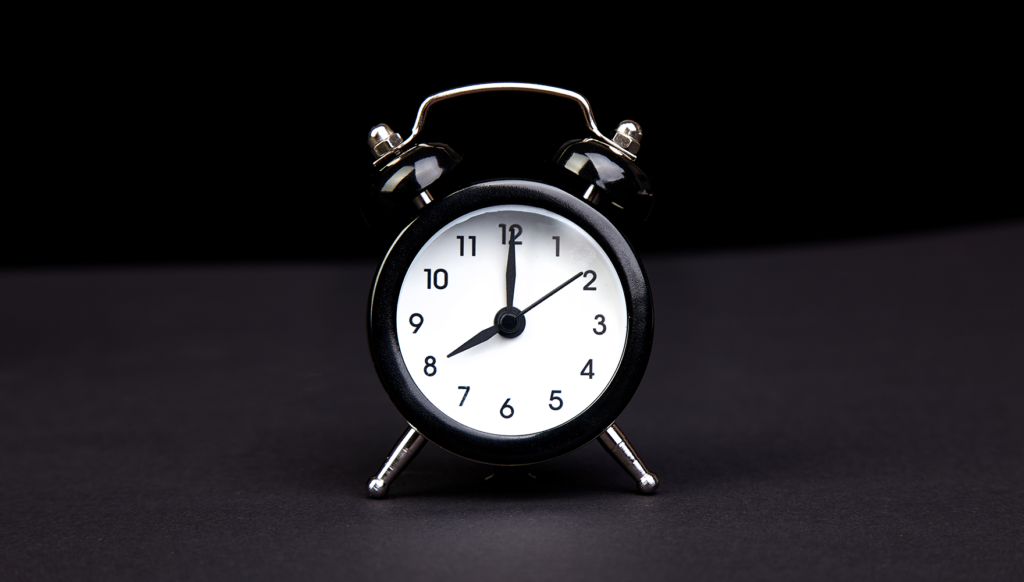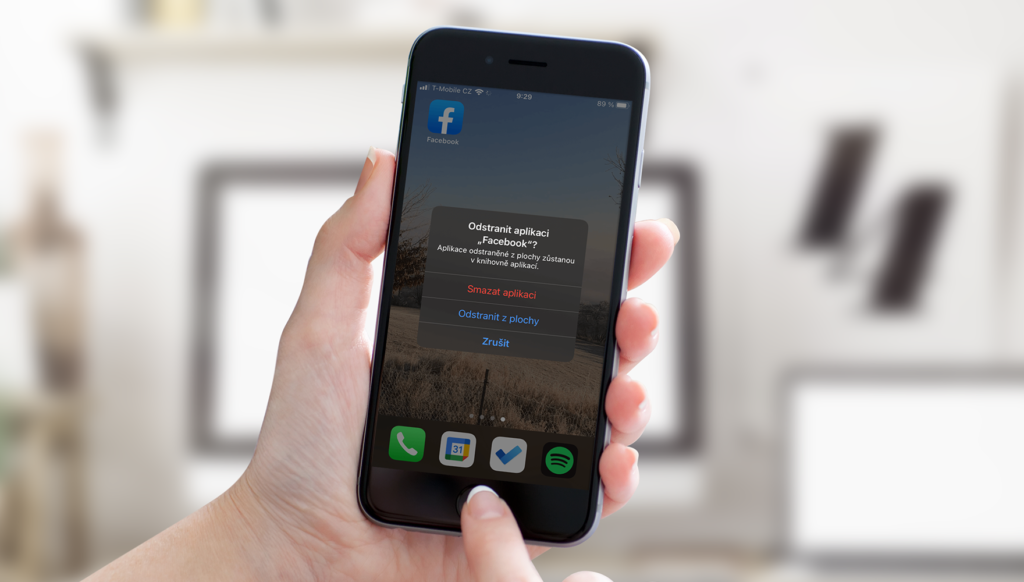Are you sick of being online already? Are you sitting in front of your screen more than you would like? You are not alone in this; we are all dealing with it! I've prepared 7 steps to get into (digital) balance and control the online madness. Choose one or apply them all one by one. These are my seven answers to the question: What are YOU doing?
Having online under control is simple, but definitely not easy. Technologies are designed to take our attention, keep us entertained and be simpler and more enjoyable than reality. Try to remember this next time you are absorbed in your devices.

Step # 1 – Restrict notifications
Switch to active mode, use tools when you want them, not when they need your attention, and regain your time by turning off notifications.
Do you really need all those notifications? Wouldn't it be better to turn those unnecessary distractions? Keep only the notifications turned on that are of some benefit to you.
The red color of notifications immediately attracts our attention. Then when we see that the other party is writing something (those three flashing dots), it keeps us tense about what's to come. Why? chance? Use of psychology in practice, baby!
To turn off notifications, go to Settings / Notifications / Specific applications / Enable notifications. Et voulez!

Step # 2 – Set your limits
For 80% of us, the first thing we check in the morning is our mobile phone. In a day, we run our thumb over the display almost 3000 times. We use our phones from the moment we wake up until we fall asleep again. In the bathroom, on the toilet, on the tram, behind the wheel, at work, all the time. It's too much!
Set usage limits – for example, set the window either when you are allowed online (mine is 8am to 7pm) or when you are "at work". Alternatively, set the limit to a maximum of 2 hours on your screen per day. Your mobile phone knows how much time you spend on the screen. Open Settings / On-Screen Time (iPhone) or Digital Balance (Android).
Introduce order and routine into your life, it helps the psyche. How about instead of checking Instagram in the morning, maybe go outside to send an email? Just a little bit is fine at first. You clear your head, come up with other thoughts, get an overview and look out of your bubble. Or introduce a digi-free evening with your partner or family. What's better than paying your full attention to someone?
And what about the unavoidable problem that you need a cell phone in your bedroom for an alarm clock? You could probably get by with an old school alarm clock or a sort of smart watch with an alarm clock function. The vibration will only wake you up, not your whole family. Just don't forget to turn off other notifications on it.

Step # 3 – Reduce your information overload
Do you really need to watch everyone and everything on the internet? You know that the flow of information can be endless. Where do you stop? One would drown in that flood of information. Information overload is one of the most common topics we address.
Curiosity about what, who, where and why is human nature. Watching the lives of others is easier than living our own. But there may be situations where we focus so much on what is happening around us that we do not have the time, energy and patience to deal with our own lives and our own difficulties. we all have our own problems, we just don't show them on social networks.
Choose what is important to your life and think about what you are paying attention to. With each click, we vote on what is and what is not successful and what will spread on the Internet. Be mindful.

Step # 4 – Disconnect once a week
Disconnecting is a great way to meet yourself and to interact with the people around you. Your attention is not constantly divided and partially busy with what may be happening on your phone.
Unfortunately, a bit of withdrawal symptoms awaits you at the beginning, but then comes inner peace and satisfaction. Can you disconnect for more than a day? Great! Don't want to give it up for a full day? Try just one afternoon and see what happens.
Choose a day of the week and go for it. But ideally tell your loved ones in advance. This will prevent unnecessary inconvenience. The fact that a person is suddenly not available (in contrast to the usual constant availability) is nowadays a sign that something might have happened to you. The ideal option is, of course, that someone close to you will join you in this challenge.

Step # 5 – Stay positive
If you receive 99 positive comments on a post and 1 negative comment, what will you focus on? Our brains tend to focus on the negative. Think about it, when you go out on the street and go to work, your journey won't start with thirty neighbors complimenting you. This happens with an Instagram photo through likes and hearts, but not in real life.
We live in a really difficult time. But after every storm the sun rises, after every trouble there is an improvement. Even though it looks like it, the world does not end there. It's just that someone is constantly convincing us of that. And if it really ends, I would rather smile for the last few days than be gloomy until the end.
Negativity attracts much more attention than positivity. And what is the main goal of being online? Yes, attention. Who cares about good news? The truth is boring and it doesn't sell. Shock or scare people, and you are king. This is the unfortunate truth.
So what's up with this? Decide to be simply positive. According to a 2002 study by Atienzi, Stephens and Townend, we can reduce our stress by up to 60% if we believe in a good ending. Or use a Gratitude Diary: Write down every day what made you happy or what you achieved. When it seems to you that everything is worthless and that you are just surviving and not moving anywhere, you will see in plain black and white that it is just a feeling and it is not true.

Step # 6 – Uninstall toxic applications
Delete applications that consume our time from your mobile phone: Facebook, LinkedIn, Instagram, etc. They often use emotions such as envy or fear to keep us connected.
Ask yourself, “What do they give me? what do they take from me?” If social networks give you more than they take, feel free to use them. They tend to take more from me, so I just don't go through the content, instead I only use it as a communication channel. When I see how my (often unhappy) friends look happy and successful online, it seems to me like an unnecessary lie that I don't need in my life. I'd rather create something. Maybe this website.
Now the only place I can access social networks is from a laptop, consciously, and if I want to. I have newsfeed blocked by a browser extension wherever I can If I didn't, I'd scroll and scroll… And I just don't want that.

Step # 7 – Download digi helpers
Addressing digital balance through applications is like hammering a nail with a screwdriver. But at least from the beginning, they will help you find motivation. Gamification(), in fact, will make you enjoy it.
The simplest step is to eliminate the effect of blue light, which directly affects sleep. There are several tools – Night shift function in settings (iPhone), Twilight application (Android), night lighting function (Win 10) or Flux application. Also set the dark mode wherever you can. Your eyes will thank you.
The next step is to keep track of your time on the screen and change your habits. There are several applications that help with this. For example, Moment, Forest, Freedom, or RescueTime. However, all of them are paid and they can't do much more than the applications you already have in your mobile phone. You can find them in the settings and there are two – Screen Time (iPhone) / Digital Balance (Android) – that are the most useful.
Do you want more?
Some time ago, I wrote down all the applications and routines I use to maintain digital balance. You can also check out my article on small digital helpers.
And if you want to learn as much as possible about digital balance and life offline, I'll be happy to see you at one of my places Digital well-being courses.
Still a little lost? Is something missing from the list? Let me know!


